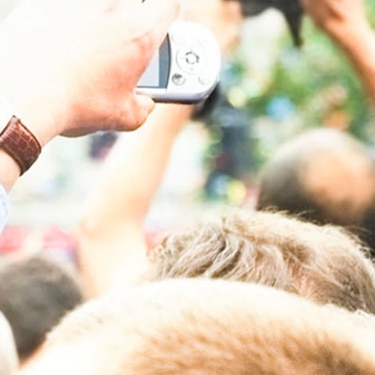AI and UGC: Harmony in modern news workflows

News coverage used to be finite. Whether a TV report or a front page spread, a story would be expressed in a certain number of words, and then shared in its entirety with the consumer. But that changed.
Online, comment sections invited opinions, extending the life of a story and allowing people to join a conversation of the issues and share their personal views. Meanwhile, blogs, vlogs and social media provided opportunities for people to start creating their own content, which quickly grew in volume. Finally, we came full circle, and news organisations started to incorporate user-generated content (UGC) into their coverage. Rather than just consuming the news, or commenting on it, citizens were helping to create it.
The problem now is that there’s so much of this content out there. While working with IHS Markit, we found that this year, UGC will account for just under 10% of all online content globally, rising to almost 20% by 2025. And this makes finding and using the best UGC for a news story, at speed, a significant workflow challenge.
But could it be a challenge that Artificial Intelligence (AI) can help to overcome?


Intelligent workflows
The possibilities of AI and Machine Learning have already been noted by broadcasters: according to an IABM end-user survey, 8% of media technology buyers have already adopted some form of artificial intelligence, but a further 56% intend to in the next couple of years.
And when it comes to the news workflow challenges that UGC could pose, there are multiple areas where Machine Learning and AI could help over the coming years:
- Aggregation – gathering UGC from across multiple social media platforms, using advanced algorithms and tailored searches to pick and present the best content for a given story.
- Verification – using facial and background feature (or landmark) recognition technology to confirm the identity of video subjects and their surroundings, and gauge the authenticity of content.
- Production – simplifying more tedious tasks, such as closed captioning and social media clip generation.
- Licensing – seeking and acquiring permission for the use of any content could be partly automated, if not fully automated in the future, with intelligent forms and automatically tailored communications.
- Storage – automated metadata creation and logging will lead to more efficient media libraries that can grow and organise themselves.
Automate, integrate, accelerate
To my mind, all of these areas rely on one principle, and one that’s already being used to great effect: automation.
Advanced automation can dramatically improve the speed and efficiency of key processes within news workflows, taking over some manual elements and helping to harness and manage growing waves of UGC. And it can bring the scalability needed to continue doing this long into the future.
Our own Media Backbone Hive automates numerous processes in a centralised, co-ordinated way, streamlining workflows from content discovery through to acquisition, production, delivery and archiving. All via a cloud platform designed to smoothly integrate with third party systems and look after content in any format – whether from your ENG team or a Citizen Journalist’s Twitter feed. And as UGC volumes grow, Hive does too.
Expectations of 24/7, real-time news coverage are almost impossible to meet, but UGC provides a path to achieving this. At a time when many media companies are having to re-think their business models and delivery methods to keep up with changes in ad spend and viewing behaviours, Citizen Journalists can be a phenomenal asset. But aggregating and integrating their content will become more challenging if systems and processes aren’t adapted or updated.
Automation isn’t a cure-all for UGC challenges, but it’s an invaluable tool – and one that sets a path towards an exhilarating AI and Machine Learning future.




